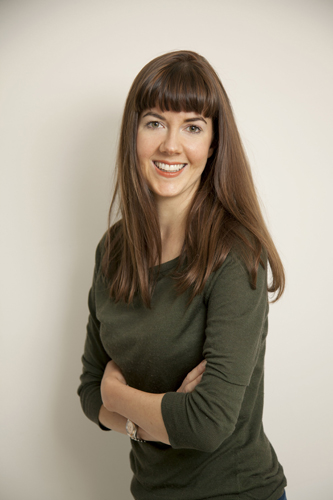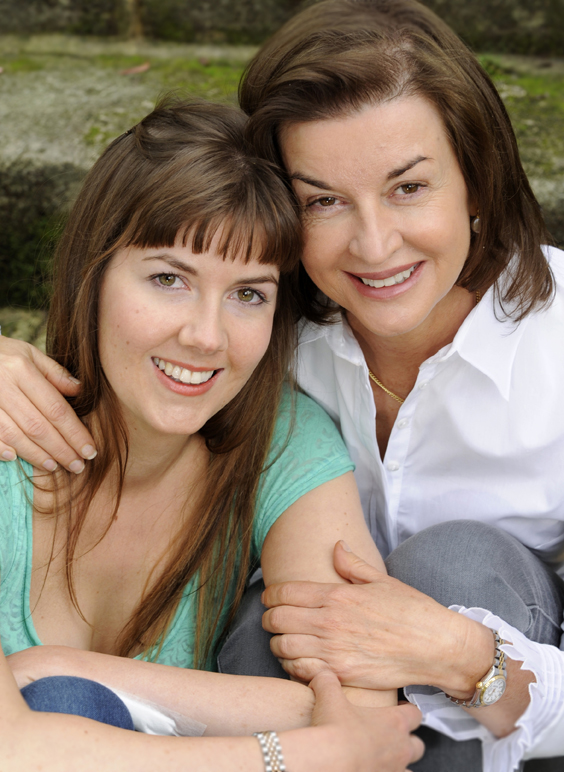When Laura Bond’s mother Gemma was diagnosed with cancer in 2011, she refused chemotherapy and radiotherapy. Laura, a journalist, wrote a blog about her mother’s decision and now has shared their journey in a new book
When I discovered mum had cancer it was like stepping out of my body and into a nightmare. I was on holiday at the time and a solid 30 hour flight from Australia, where Mum lives. My family, not wanting to spoil my 28th birthday, had waited a week to contact me, so by the time I got the call mum had just come out of surgery, which confirmed the worst; she had ovarian cancer and it was also in her uterus.
On hearing those words every cell in my body just said ‘No.’ I wanted to crawl into a wormhole and turn back time. I recall thrashing my fists against the floor, while my (then) English boyfriend looked on helplessly, not knowing what to say or do. There are no words in that situation that can provide comfort and, for me, the only way to quell the terror was to get online and find a solution.

As a journalist with ten years experience I had access to world’s leading experts and could call on them for advice. What they shared, shocked and inspired me in equal measure: one study from the Scientific American revealed chemotherapy only works in 2-3 per cent of cancer cases – another from Harvard Medical School found that marijuana cut lung cancer growth in half.
I quickly discovered there were as many causes of cancer as there are cures and yet most of us are given only three choices – cut, burn or poison. Statistics reveal 67 per cent of cancer patients submit to surgery, 80 per cent receive chemotherapy and 60 per cent have radiation. Although Mum did have surgery to remove the tumour, she knew the other two options weren’t for her. ‘I’ve made up my mind – you cannot heal cancer with poison,’ she told her oncologist. When asked to explain her decision, to refuse both chemotherapy and radiotherapy Mum wasted no time. ‘My brother died of Leukaemia, in his thirties – after enduring a hellish year of chemo,’ she said. ‘Im not going down the same road.’
She then referred to a confidential questionnaire, which revealed 81 per cent of Canadian oncologists wouldn’t have chemotherapy if they were diagnosed with cancer – adding that she knew of patients who had travelled to alternative clinics in Germany and returned tumour-free. The oncologist took his leave.

In those first weeks mum questioned whether she was being stupidly self-righteous. It didn’t help that almost everyone – close friends, western and Chinese doctors – were shaking their heads in despair. ‘How could you do that to your kids?’ one friend said (Mum’s ‘kids,’ range from 22-32 years old). The desire to abdicate responsibility and place it in the hands of someone who, in theory, knows best at times seemed like an easier option for her. But she was determined to be a victor rather than a victim of cancer, and that meant trusting her body’s ability to heal itself, with natural, non-toxic treatments.
My siblings and I backed mum from the start. Having grown up in a house where vitamins and homeopathy were used to treat everything from sore throats to broken hearts – and where it was normal to see mum upside down in a headstand or supervising the dog’s acupuncture – we knew the alternative cancer route was the right path for her … and the results quickly vindicated her decision.
When mum returned to her oncologist six weeks after her hysterectomy he was amazed at her rapid recovery. ‘You’re healing beautifully!’ he exclaimed. Six months later he said: ‘Your results are so good I don’t need to see you again for another six months.’ The vitamin injections, ozone therapy, daily coffee enemas, juicing and powerful supplements were evidently having an effect.
Mum’s CA-125 blood test (a marker for ovarian cancer) was 170 when she was first diagnosed. Six months later it was an astounding eight. The normal range is between 0-21. While Mum was elated at her results she was saddened by the oncologist’s disinterest in her healing process. Never once did he ask what treatments she was having or what changes she’d made – but we thought others might like to know.
I started writing the Mum’s Not Having Chemo to bring to light some of the limitations of conventional treatment and to share what else was out there. To our amazement, the blog touched many. Messages from people all over the world – from Arizona to outback Australia -came streaming in like sunlight, filling mum and I with hope and joy and transforming our view of the disease.
For mum, the illness signaled the need for a major overhaul on a physical, emotional and spiritual level. Prior to getting cancer, she rarely gave herself permission to pause. ‘I was always postponing leisure time in favour of ‘one more’ task,’ says mum. ‘I would tell myself, ‘If I can just get dinner ready/put one more load of washing on/call in on elderly parents/reply to that email… then I can relax,’ but that time almost never came. Now, I stop myself when I start hearing that internal dialogue and make time to do what I love, whether it’s listening to an inspirational speaker on my iPod or walking around the garden barefoot in the mornings, with my dogs and my gardening gloves.’

I am eternally grateful that mum is now well and from this vantage point it is easy to look at the silver lining that has emerged from such a ‘dark night of the soul.’ But there is no denying that those first few weeks following a diagnosis of cancer are grim. Life as you know it has been taken away and part of moving on means allowing yourself time to mourn.
After one particularly trying weekend I remember mum saying, ‘Is this it? Is this what my life is going to be like now?’ Before she’d started to heal, and before we’d discovered just how many options were out there, it all seemed a bit hopeless. But then we started to watch, to read, to listen – and after a while, if we were very still, we could almost feel the hope trickle in.
My book is certainly not prescriptive – each patient must find the right combination of therapies for them – but the one piece of advice that I believe applies to everyone is don’t stare despairingly at statistics. Instead, fill your mind with stories of survivors. If they can do it – why not you?
by Laura Bond
Publisher: Piatkus
Photographs: ©Laura Bond/Tania Dolvers. For more information on Laura, please go to her website.
Like this article? Sign up to our newsletter to get more articles like this delivered straight to your inbox.





















































